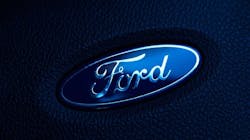After reports of exhaust odors in the cabin of 2011 and 2017 model year Ford Explorers, the National Highway Traffic Safety Administration (NHTSA) has opened an investigation into the concerns of possible exposure to carbon monoxide.
Eleven of the 791 written reports involve Ford Police Interceptor Utility vehicles.
While still in open investigation of the issue, Ford has discovered holes and unsealed spaces in the back of some Police Interceptor Utilities from upfitting the vehicles with police equipment, like emergency lighting and radio, after purchase. The holes that were drilled through the rear of the vehicle were not properly sealed, according to a statement from Ford. Ford believes this customization could allow exhaust to enter the cabin.
To address these concerns, Ford announced it would cover the costs of specific repairs in every Police Interceptor Utility that may have this concern, "regardless of age, mileage or aftermarket modifications made after purchase." These repairs include, sealing off the rear of the vehicle, new air condition calibration to bring in more fresh air during heavy accelerating typical of police driving and checking for engine codes that could indicate a damaged exhaust manifold.
ODI recently learned that the Police Interceptor version of the Ford Explorer is experiencing exhaust manifold cracks, and this may explain the exhaust odor, the report summary stated.
Related crash events and injuries
ODI has identified three crash events and 25 injury incidents citing a total of 41 injuries seemingly due to the exhaust entering the cabin.
"The alleged injuries, as affirmatively indicated on the VOQ reports, range from unspecified to loss of consciousness, with the majority indicating nausea, headaches, or light headedness," according to the NHTSA report. "One police incident alleged a crash with related injuries, and a second police incident reported a physiological injury allegedly from carbon monoxide (CO) exposure. Another reported police incident resulted in a rollover crash event with injuries."
To date, no data or evidence collected from NHTSA's Office of Defects Investigation (DOI) crash allegations suggest they were the result of carbon monoxide poisoning, the alleged hazard, according to the report summary. There is preliminary testing that suggests, however, that CO levels may be elevated in certain driving scenarios.
Drivers of non-police Ford Explorers
There have been reports of exhaust odors in some regular Explorers, but, according to a Ford statement, those are unrelated to the carbon monoxide described by police departments.
"Drivers of regular non-police Ford Explorers have no reason to be concerned," Hau Thai-Tang, executive vice president, Product Development and Purchasing said in a statement.
All customers concerns can call the dedicated hotline at 888-260-5575.
ODI identified 2400 reports (485 owner complaints, 1254 warranty claims, 606 dealer field reports, 55 legal claims), involving 2,051 unique vehicles, that appear to relate to the exhaust odor issue, and include 123 reports that are duplicative of the VOQ reports. A number of the Ford reports also discussed health effects similar to the VOQs, specifically nausea and headaches, according to the NHTSA summary.
To date, no substantive data or actual evidence (such as a carboxyhemoglobin measurement) has been obtained supporting a claim that any of the alleged injury or crash allegations were the result of carbon monoxide poisoning, the alleged hazard. ODI has obtained preliminary testing that suggests, however, that CO levels may be elevated in certain driving scenarios, although the significance and effect of those levels remains under evaluation as part of the EA.



